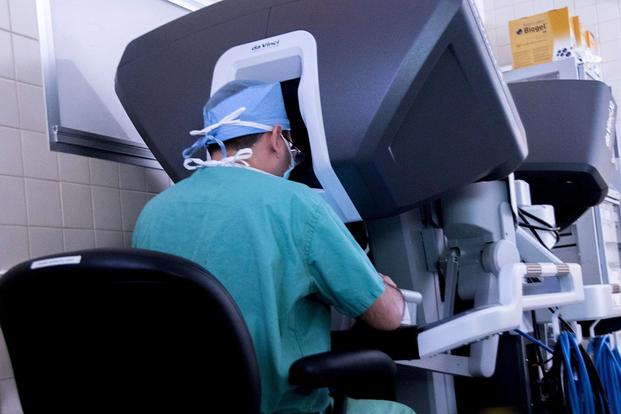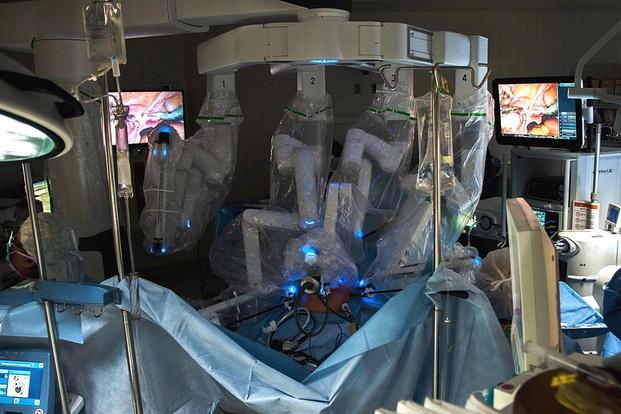U.S. Army physicians, located far from a field hospital, could soon be performing delicate, highly specialized surgery on wounded soldiers using robotics and other forms of telemedicine.
Army Surgeon General Lt. Gen. Nadja West said recently that the demands of future battlefields will force the military medical community to prepare for operational environments that are vastly different.
"We might not have the life-saving 'golden hour' evacuation system we have been accustomed to for the past 17 years," West told an audience recently at an Association of the United States Army function.
"Our soldiers may be isolated for 72 hours or more, requiring prolonged field care if injured in an austere environment," she said.
Enemy air superiority may not allow the U.S. military to fly critically wounded soldiers to well-equipped hospitals in far-off countries, so field hospitals may have to rely on new, robotic technology to save patients, West added.
Robotic surgery, which is currently used in non-invasive procedures, could be adapted to meet the Army's battlefield needs, she said.
"There is robotic surgery that's going on right now," West said, adding that the challenge will be "how quickly we can scale it all throughout our enterprise."
The Army performed its first robotic surgery in 2016 at the William Beaumont Army Medical Center in El Paso, Texas, using the da Vinci Xi surgical system. The four-armed, minimally invasive robotic surgery system can be controlled by a surgeon using a high-definition 3D imaging system, which displays a magnified view of the patient's anatomy.
Using other forms of telehealth technology will allow a specialist to walk a medical professional through a critical procedure using satellite technology, West said.
"We actually tested this at Fort Campbell, Kentucky. ... There was a soldier in a very remote area that had something called a peritonsillar abscess, which is a surgical emergency," she said.
The procedure usually requires an ear, nose and throat, or ENT, specialist to perform what can be a delicate surgery, West said.
"There was a scope put down the soldier's throat. There was an ENT a thousand miles away looking at it, telling the medical professional where to make the incision because you have to drain it," she explained.
The procedure prevented the patient from having to be evacuated, West said, adding that the Army medical community must be able to adapt to situations like this in the future.
"We must always be ready and prepared to perform in non-traditional settings and in ways that might be outside of our comfort zone," she said.
Editor's Note: This story has been updated to show the first robotic surgery at William Beaumont Army Medical Center was performed in 2016.
-- Matthew Cox can be reached at matthew.cox@military.com.












